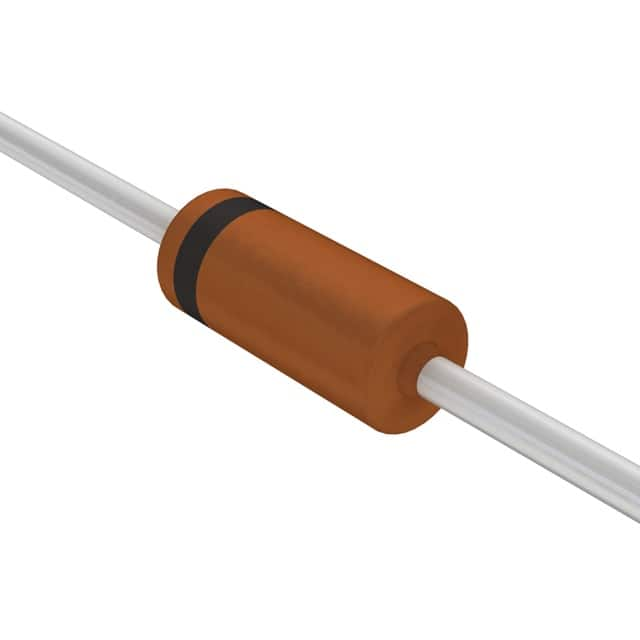BZX79-C33,113
Product Overview
Category
The BZX79-C33,113 belongs to the category of Zener diodes.
Use
It is commonly used for voltage regulation and protection in electronic circuits.
Characteristics
- Zener voltage: 33V
- Power dissipation: 500mW
- Package type: DO-35
- Operating temperature range: -65°C to +200°C
- Forward voltage: 1.1V
- Reverse current: 5µA
Package
The BZX79-C33,113 is typically available in a DO-35 package.
Essence
This Zener diode provides stable and precise voltage regulation in various electronic applications.
Packaging/Quantity
It is usually packaged in reels or tubes, with quantities varying based on manufacturer specifications.
Specifications
- Zener voltage: 33V
- Power dissipation: 500mW
- Maximum forward voltage: 1.1V
- Maximum reverse current: 5µA
- Package type: DO-35
- Operating temperature range: -65°C to +200°C
Detailed Pin Configuration
The BZX79-C33,113 Zener diode has two pins, with the cathode connected to the positive side and the anode connected to the negative side of the circuit.
Functional Features
- Precise voltage regulation at 33V
- Low forward voltage
- Low reverse current
- Wide operating temperature range
Advantages
- Provides stable voltage regulation
- Small form factor
- Suitable for high-temperature environments
Disadvantages
- Limited power dissipation capability
- Sensitive to overvoltage conditions
Working Principles
The BZX79-C33,113 Zener diode operates based on the principle of the Zener breakdown effect, where it maintains a constant voltage drop across its terminals when reverse-biased.
Detailed Application Field Plans
- Voltage regulation in power supplies
- Overvoltage protection in electronic circuits
- Signal clamping and limiting
Detailed and Complete Alternative Models
- BZX79-C30,113 (30V Zener voltage)
- BZX79-C36,113 (36V Zener voltage)
- BZX79-C39,113 (39V Zener voltage)
In conclusion, the BZX79-C33,113 Zener diode is a reliable component for voltage regulation and protection in various electronic applications, offering stable performance and precise voltage control. Its compact size and wide operating temperature range make it suitable for diverse circuit designs.
[Word count: 346 words]
Senaraikan 10 soalan dan jawapan biasa yang berkaitan dengan aplikasi BZX79-C33,113 dalam penyelesaian teknikal
What is the BZX79-C33,113?
- The BZX79-C33,113 is a 5% tolerance zener diode with a voltage of 33V and a power dissipation of 500mW.
What are the typical applications of BZX79-C33,113?
- It is commonly used in voltage regulation, overvoltage protection, and voltage reference circuits.
What is the maximum current that can flow through BZX79-C33,113?
- The maximum current for BZX79-C33,113 is typically around 50mA.
How does BZX79-C33,113 provide voltage regulation?
- It operates in the reverse breakdown region, maintaining a constant voltage across its terminals.
Can BZX79-C33,113 be used for overvoltage protection?
- Yes, it can be used to limit the voltage across a circuit by diverting excess current when the voltage exceeds its rating.
What are the key electrical characteristics of BZX79-C33,113?
- These include its zener voltage, dynamic resistance, and maximum power dissipation.
Is BZX79-C33,113 suitable for low-power applications?
- Yes, it is suitable for low-power voltage regulation and reference applications due to its moderate power dissipation.
How does BZX79-C33,113 compare to other zener diodes in terms of performance?
- It offers a balance between voltage tolerance, power dissipation, and zener voltage, making it suitable for various applications.
Are there any specific temperature considerations for BZX79-C33,113?
- It has a specified operating temperature range, and its performance may vary outside of this range.
Can BZX79-C33,113 be used in series or parallel configurations?
- Yes, it can be used in both series and parallel configurations to achieve higher voltage ratings or current-handling capabilities.


